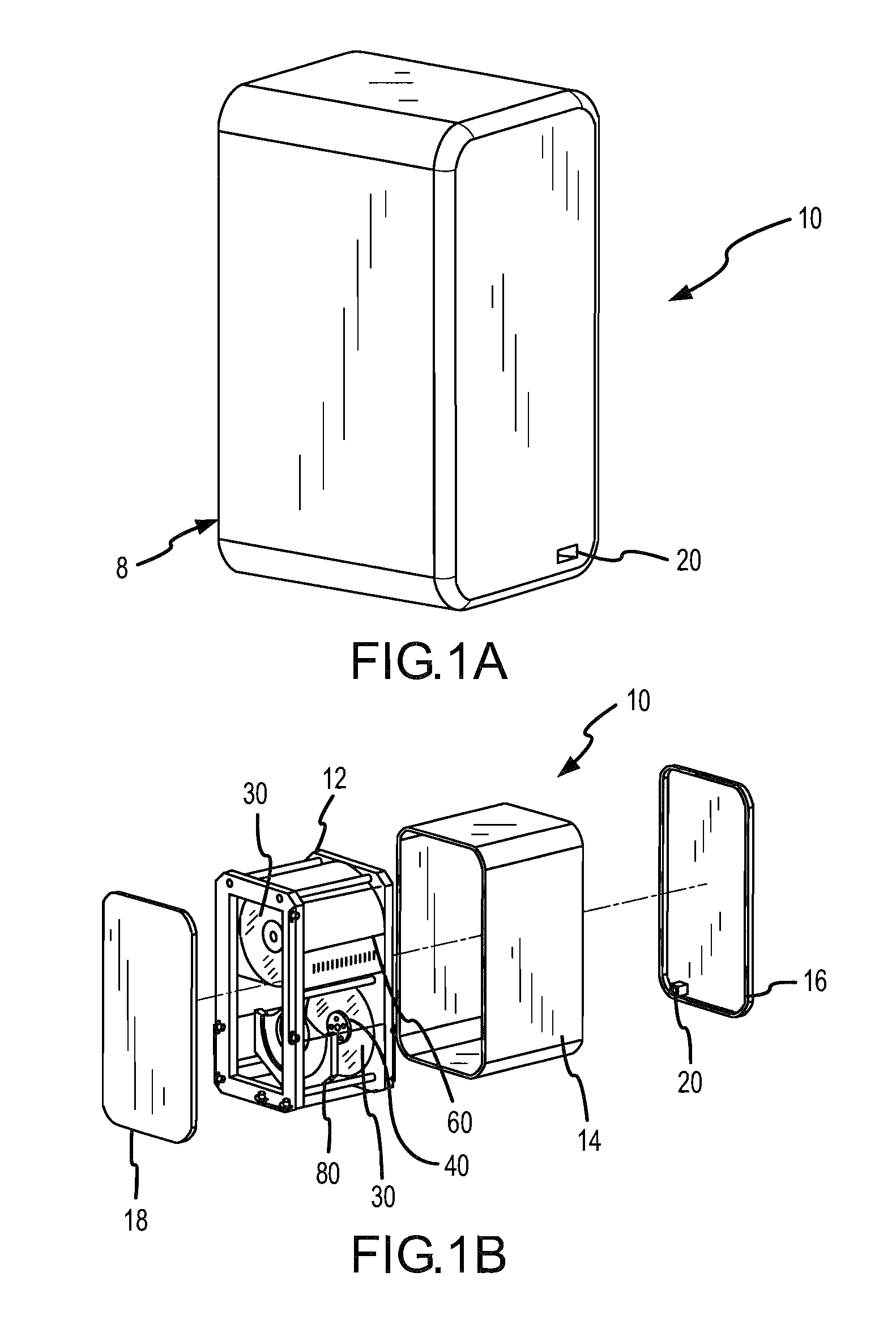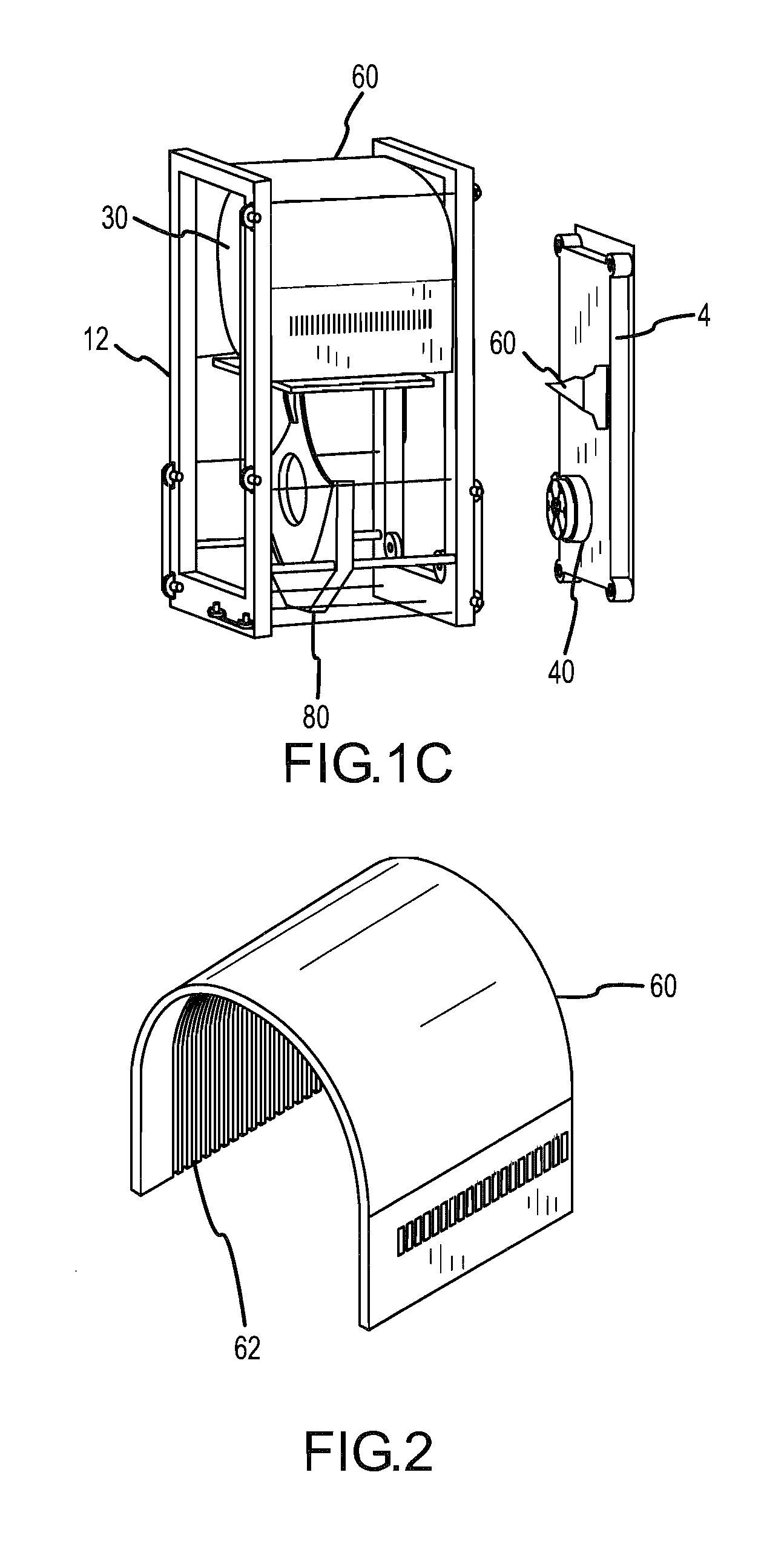[0009] In view of the limitations of the prior art, use of hard drives has not been a cost
effective solution for large off-line data storage facilities (e.g.,
archival storage of data) such as data silos and / or for many data back-up applications. Accordingly, it has been recognized that the ability to use multiple data storage disks with a single set of read-write heads could alleviate many of the limitations of the prior art and allow for hard drive storage devices to be utilized for
large scale data storage as well as data back-up applications. In such an arrangement, a number of data storage disks may be stored in an inactive state at a storage location and selectively retrieved in an automated process for accessing data therefrom and / or writing data thereto. In addition, one or more selected data storage disks may be securely engaged with a drive hub associated with a set of read-write heads. That is, a single drive hub and a set of read-write heads may be utilized with a plurality of
individual data storage disks that are selectively engageable with the drive hub. Such an arrangement eliminates the need of individual read-write heads for individual disks and overcomes previous tolerance problems that typically restricted storage devices to use of no more than about three disks fixedly mounted to a common spindle.
[0011] In order to securely engage a selected data storage disk with the drive hub, the drive hub may include one or more restraining elements that are operative to selectively engage the data storage disk, for example,
proximate to the central aperture of the data storage disk. In one arrangement, the restraining elements may be disposed on and / or around a portion of the hub that is disposable through the central aperture of the selected data storage disk. Accordingly, such restraining elements may be moved from an initial position, or open position, to a subsequent, or clamped, position. In such a clamped position, the restraining elements may physically engage a surface of the data storage disk. Further, in the clamped position, the outside dimension, or
diameter, of the restraining elements may be greater than the
diameter of the central aperture of the data storage disk. Accordingly, in such a position the storage disk may be restrained on the drive hub. Further, the restraining elements may apply a compressive force to a surface of the storage disk and / or apply an outward force (e.g., relative to the drive axis) to the central aperture of the storage disk. Such an outward force may assist in properly centering the storage disk on the drive hub.
[0015] In an arrangement utilizing two or more disk access devices, these disk access devices may be utilized simultaneously and / or redundantly. Further, the multiple access devices may be synchronized by a controller to run in tandem. In this regard, data storage / retrieval may be performed in, for example, a
RAID configuration such that high data transfer / retrieval rates are possible.
[0017] In order to remove the storage disks from the storage location, the
storage structure may utilize individual actuators that are operative to move the storage disks. Alternatively, the
storage structure may utilize gravity to load selected data storage disks into the
carriage. For instance, a U-shaped member may be inverted and upright such that disks are inserted into grooves within the
concave surface of the structure and are maintained within the grooves by a stop member. When the stop member is removed from the groove, the data storage disk may be operative to drop into the
carriage for transport to the disk access device. One or more movable elements / actuators may be utilized to control the drop of the data storage disks to prevent damage thereof.
[0025] According to another aspect, a method is provided wherein a data storage disk may be selectively engaged with a rotating hub of a
data access device. The method includes disposing a central aperture of a data storage disk over a centering stud of a drive hub. Once so disposed, a restraining element that is movably connected with the centering stud may be moved from a first position that is within an area defined by the boundary of the central aperture to a second position that is outside the boundary defined by the central aperture. Accordingly, the restraining element may restrain the data storage disk to the hub.
[0026] According to another aspect, a
storage structure for storing a plurality of data storage disks is provided. The structure includes first and second spaced supports wherein a plurality of corresponding sets of grooves are formed on the facing surfaces of the first and second spaced supports. Each set of grooves is sized to receive opposing edges of a data storage disk. A corresponding plurality of stop members are selectively positionable into and out of at least one groove of each of the set of grooves. Movement of the stop member into and out of the groove permits the data storage disk to be retained within the set of grooves or move out of the set of grooves, respectively. In one arrangement, the data storage disk may move out of the rack under the force of gravity when the first and second supports are in an upright position. The stop members may further include an
actuator that is operative to move the stop member into and out of the grooves. In one arrangement, the stops are operative to rotate into and out of the grooves.
 Login to View More
Login to View More 


